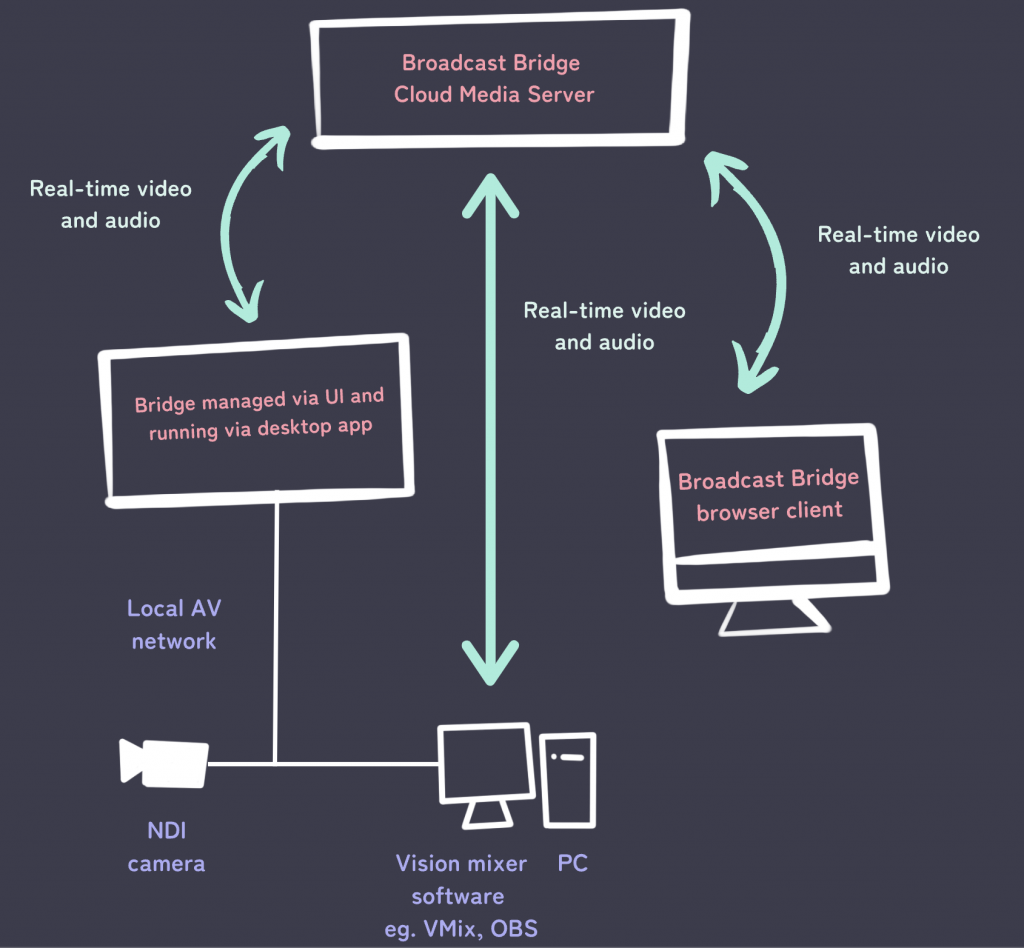Dan is a man of many hats: Nimble Ape, CommCon (London 5-6 June and San Francisco 12-13 June), and Everycast (Broadcast Bridge). His focus is the merging of RTC (Real Time Communications) and Media (video streaming).
We had an interesting discussion on the emergence of Media over QUIC (Quick UDP Internet Connections). While still early days for that emerging standard, WebRTC remains the answer for most real-time video comms. It has potential and could herald an emerging fragmentation in video over the web, which is currently consolidated around WebRTC.
Simply, the tech giants, Google, Microsoft, Apple, etc., could create their own silos based on top of Media over QUIC. The usual phases technologies go through in harmonization to make the concept possible, then specialization to make more money from market domination.
Broadcast Bridge provides a browser-based dashboard so you can manage your bridges and have your remote talent join from anywhere in the world with just a web URL Cloud media servers providing geographically close, secure and private hosting for your rooms. And a native app that acts as the direct link to your vision mixer and AV network, so you can produce professional broadcasts in real-time. See picture below.
Network Device Interface (NDI) is a software specification developed by the technology company NewTek that enables high-definition video to be delivered, received, and communicated over a computer network with low-latency, and high-quality.
Content creators no longer need to rely on people using Zoom, Skype or Teams. You can see on the Podcast how Zoom was struggling for part of the podcast. An interesting point raised by Dan is the perception around WebRTC. That its not ‘production’ quality. Well, neither is Zoom or Skype or Teams. Media over QUIC is on the Broadcast Bridge roadmap given the improved quality perception.

Recently added to Broadcast Bridge is WHIP (WebRTC HTTP Ingress Protocol), a standardised signalling protocol for ingesting WebRTC streams. By offering a standardised signalling protocol, WHIP enables you to send audio and video feeds from supported hardware and software directly into a cloud media server like the one in Broadcast Bridge.
Software solutions like OBS (Open Broadcaster Software), now offer WHIP capabilities too, allowing you to stream your OBS scene directly to the media server with just a URL and a token. I use OBS regularly for streaming events.
With WHIP being one of the shiny new things in the WebRTC world, there has been a lot of talk around it at several conferences in the field.
- Dan talks about it at London Video Tech meetup and FOSDEM this year.
- Lorenzo Miniero, the main author of Janus, gave an talk on it at CommCon 2021.
- You might also want to check out this blog about WHIP from Dolby.io. Dolby has one of the most active teams behind the protocol.
A great discussion on WebRTC and so much more.

4 thoughts on “Podcast 49: TADSummit Innovators, Dan Jenkins, WebRTC and more”
Comments are closed.